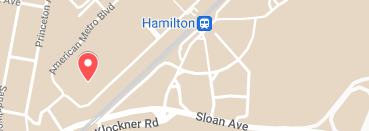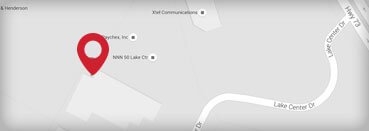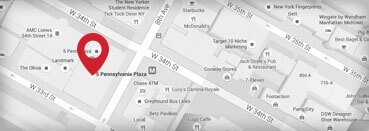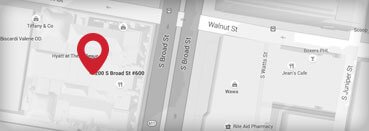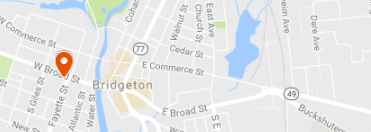Brick is among the materials that are most commonly used as an exterior cladding material on condominiums and other residential buildings in New Jersey. If correctly installed and maintained, it will usually last for the life of the building without allowing water to penetrate inside the wall cavity where it can damage sheathing and framing. Nevertheless, we are routinely called upon to assist condominium and homeowner’s associations that have reports of damage to their buildings caused by deficient design and/or installation of brick.
Bricks are porous. That means anyone designing a building with brick cladding over a non-masonry substrate (e.g., wood, oriented strand board (“OSB”), gypsum, etc.) needs to include a secondary drainage system to ensure that water getting through the brick does not enter the wall cavity and damage the sheathing and framing. That secondary drainage system usually means the walls are designed so that kick-out flashings and window head and sill flashings are installed along with a weather-resistant barrier (“WRB”) such as Tyvek or felt paper. The WRB is lapped under the flashings so that when water penetrates through the porous brick or around fenestrations in the brick (e.g., windows, air conditioning units, pipes, etc.) the water hits and rolls down the WRB and is directed to the flashings. The flashings then safely evacuate the water outside the walls. Through-wall flashings are usually required at intersections of the brick with other building materials like vinyl, stone, stucco, etc. so that water can exit the wall cavity between the WRB and the back side of the bricks. Weep holes are also typically required at the bottom of the brick walls to help evacuate the water out of the wall cavity.
Unfortunately, contractors sometimes exhibit sloppiness and a lack of diligence in installing brick. One common mistake is made when the bricks are being installed and mortar is being applied. Before it dries, the bricklayer must wipe off the excess mortar that gets on the back of the bricks while the mortar is being troweled in place. If the bricklayer fails to wipe the excess mortar off the back of the bricks, the mortar dries and hardens. The hardened mortar blocks the water that is draining down the WRB and precludes the water from being evacuated out by the flashings and weep holes. It traps the water inside the wall cavity. In time, as more water accumulates, the WRB wears away and the water is pushed onto the non-masonry substrate underneath it. Trapped against the substrate, massive damage to sheathing and framing can happen that is virtually invisible to the eye when you are standing outside looking at the brick clad walls.
 One telltale indication that the brick wall is suffering from water infiltration is when white, salty-looking deposits appear on the face of the brick. This is efflorescence. Efflorescence often occurs when the brick wall is constructed improperly such that water gets trapped inside the wall cavity. The wall gets saturated with water. Since the drainage plane is either missing or clogged or otherwise deficiently constructed, the water has nowhere to go but out through the face of the porous bricks. When the water vapor reaches the face of the bricks it evaporates. As it evaporates, lime from the mortar is deposited on the face of the bricks. In its dried condition, those lime deposits create a white powdery-looking residue on the face of the bricks.
One telltale indication that the brick wall is suffering from water infiltration is when white, salty-looking deposits appear on the face of the brick. This is efflorescence. Efflorescence often occurs when the brick wall is constructed improperly such that water gets trapped inside the wall cavity. The wall gets saturated with water. Since the drainage plane is either missing or clogged or otherwise deficiently constructed, the water has nowhere to go but out through the face of the porous bricks. When the water vapor reaches the face of the bricks it evaporates. As it evaporates, lime from the mortar is deposited on the face of the bricks. In its dried condition, those lime deposits create a white powdery-looking residue on the face of the bricks.
If the Association suspects there is a problem with the brick on its buildings, the Association should consider hiring an experienced forensic engineer or architect with experience testifying in litigation. A non-exclusive list of factors that may trigger such concern are:
- Reports of water infiltration inside units or inside common areas of the building;
- Seeing substantial amounts of efflorescence on the face of the brick walls;
- An absence of kick out flashings at roof/wall interfaces and at balcony/wall interfaces;
- No weep holes at the bottom of the brick;
- No through-wall flashings at brick intersections with non-brick materials;
- No flashings at the heads and sills of windows, exterior doors, through the wall PTAC and heat pump units.
If the Association decides to have the brick investigated by a forensic engineer, moisture probes should be done to determine the extent to which water has infiltrated and potentially damaged the sheathing and framing. If elevated levels of moisture are found in the walls, test cuts should be done to expose the sheathing and framing and visually assess the consequential damage that may be covered by insurance.
Once the preliminary engineering work is done, counsel must do a cost-benefit analysis to determine the return that the Association can reasonably expect to realize from pursuing litigation if it cannot settle the claim. There are several entities and people who may have liability for the damages to building components. Some or all of them may have liability insurance that could allow the Association to recover all or a substantial portion of its damages. The non-exclusive list of potentially culpable parties include:
- The mason who installed the brick;
- The architect who designed the building;
- The framing contractor if it can be proven that flashings are missing or improperly installed;
- Whoever installed the WRB if it can be shown that the WRB is lapped improperly;
- Whoever installed the windows, doors, and any through-wall PTAC or heat pump units that were installed improperly allowing water infiltration;
- The roofer if it was responsible for kick-out flashings that were installed improperly;
- The sponsor;
- The general contractor;
- Any independent third party inspectors. (Please note that the municipal or City building inspector has statutory immunity for suit for negligence in conducting inspections);
- Any manufacturer of any building material related to the brick work that, when installed per manufacturer’s installation instructions, allowed water infiltration
In doing a cost-benefit analysis to determine if litigation is warranted, insurance coverage for all culpable parties must be taken into consideration by your counsel since that will be the primary source of recovery for the Association.
The cost of legal and expert fees must be considered too. If counsel is unwilling to offer the Association representation on some sort of contingent fee basis, that should be a red flag to the Association. Stark & Stark offers full or partial contingent fees on most of its construction defect and transition cases. For more on this please read my blog Factors to Evaluate in Deciding Whether the Cost of Litigation is Worth the Likely Return on Investment.



